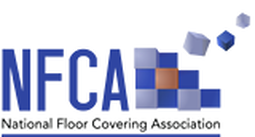C05 - CLEANING AND MAINTENANCE GUIDE
C05-1 Introduction
C05-2 Scheduled maintenance programs for carpet installations
C05-3 Carpet cleaning
C05-4 Carpet cleaning precautions
C05-2 Scheduled maintenance programs for carpet installations
C05-3 Carpet cleaning
C05-4 Carpet cleaning precautions
Preface:
This guide on cleaning and maintenance of carpet is provided for general information only. Specifiers and/or persons requiring specific maintenance and/or cleaning information about carpet should verify the requirements with the selected carpet / material manufacturer.
More detailed information (Carpet Cleaning Standard S001) can be obtained from the Institute of Inspection Cleaning and Restoration Certification (IICRC) at 2715 East Mill Plain Blvd., Vancouver, Washington, 98661, or 360-603-5675, or http://www.iicrc.org.
This guide on cleaning and maintenance of carpet is provided for general information only. Specifiers and/or persons requiring specific maintenance and/or cleaning information about carpet should verify the requirements with the selected carpet / material manufacturer.
More detailed information (Carpet Cleaning Standard S001) can be obtained from the Institute of Inspection Cleaning and Restoration Certification (IICRC) at 2715 East Mill Plain Blvd., Vancouver, Washington, 98661, or 360-603-5675, or http://www.iicrc.org.
1 • INTRODUCTION
|
2 • SCHEDULED MAINTENANCE PROGRAMS FOR CARPET FLOORING
|
There are four basic requirements of a good maintenance program:
|
|
3 • CARPET CLEANING
|
|
|
|
|
|
4 • CARPET CLEANING PRECAUTIONS – CAVEAT EMPTOR OR BUYER BEWARE
|
The governing rule in carpet cleaning should always be to follow the carpet manufacturer's specific recommendations in regard to cleaning and maintenance for the type of carpet installed.
When in doubt call the carpet manufacturer or an IICRC certified carpet cleaner.
When in doubt call the carpet manufacturer or an IICRC certified carpet cleaner.
END OF PART C05






